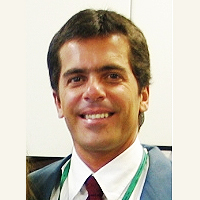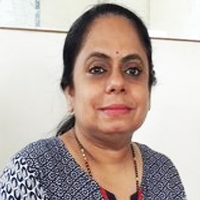Fifteen year Follow-up of Relapsed/ Refractory Patients with Hodgkin Lymphoma Treated with Autologous Hematopoietic Stem Cell Transplantation
Published on: 2nd July, 2024
We reviewed our outcomes of patients with relapsed/refractory Hodgkin Lymphoma treated with autologous stem cell transplant over a 30-year period, 1992 to 2022 and are reporting 15-year Disease-Free Survival (DFS) and Overall Survival (OS) of the 36 patients treated (19 men, 17 women, median age 41). Over the years there were different preparative regimens employed (carmustine, etoposide, melphalan and BCNU, etoposide, cytarabine, and melphalan) as well as post-transplant consolidation therapy (brentuximab). With a median follow-up of 15 years, the DFS is 52% and OS is 64%. Long-term complications include cardiomyopathy and second malignancies.The use of better salvage regimens and post-transplant consolidation therapy should lead to better outcomes.
Pure Red Cell Aplasia - Post Major ABO Incompatible Allogenic Stem Cell Transplantation Role of Ibrutinib
Published on: 24th July, 2024
Pure Red Cell Aplasia (PRCA) is a well-recognized complication of Major ABO-incompatible allogeneic stem cell transplantation. It is featured by anemia, Reticulocytopenia, and the absence of erythroblasts in a normal-appearing bone marrow biopsy. The mechanism for PRCA is presumed to be the persistence of recipient isoagglutinins, produced by residual host B lymphocytes or plasma cells, which probably interfere with the engraftment of donor erythroid cells. Several risk factors for PRCA have been reported, such as the presence of Anti-A Isoagglutininsbefore transplantation, reduced intensity conditioning, absence of Graft Versus Host Disease (GVHD), sibling donor and Cyclosporin A(CsA) as GVHD prophylaxis. PRCA is not a barrier to going ahead with Hematopoietic Stem Cell Transplantation (HSCT). There are many therapeutic options however few recover spontaneously, among the available options include high-dose steroids, Erythropoietin(EPO), Plasma exchange, Donor lymphocyte Infusion (DLI), treatment with Rituximab, Bortezomib, Daratumumab and tapering or discontinuation of immunosuppression. All these options have variable success in the literature ranging from 30% - 70%, Non-responders become red cell transfusion dependent and their quality of life is impaired. We are reporting a novel therapeutic option, Ibrutinib as an armamentarium in treating the PRCA post-HSCT, which works by blocking the Bruton Tyrosine Kinase (BTK) pathway thereby inhibiting the host B cell isoagglutinins production and good clinical response.
Elderly (> 70 years) Multiple Myeloma Patients Benefit Equally from Autologous Hematopoietic Stem Cell Transplantation When Compared to Younger Patients
Published on: 8th August, 2024
Autologous Hematopoietic Stem Cell Transplantation (AHSCT) performed after induction therapy is the standard of care for newly diagnosed Multiple Myeloma (MM) patients who qualify. Our institution has performed AHSCT for MM since 1991, and in this study, we sought to retrospectively examine the outcomes of 303 MM patients who underwent AHSCT from 1991-2021. We focused on Overall Survival (OS) and Progression-Free Survival (PFS) in patients in addition to Landmark survival (1-year post-transplantation). We found that in elderly patients > 70 years of age there was no significant difference in OS at 12 years, with 51% for patients < 70 years of age and 50% > 70; these were the same numbers for PFS at 12 years as well. We also found that median overall survival is improving overall with each decade in our transplanted MM patients with patient survival improved to over > 80% regardless of age at 7 years, when the previous median overall survival was 6 - 6.6 years before 2001. Given our findings, supported by others, we show that survival is continually improving over time in MM AHSCT patients and that AHSCT can be performed safely with equivalent landmark and long-term PFS and OS in patients of advanced age.
Impact of Intravenous Busulfan Pharmacokinetics on Safety in Pediatric Patients who have undergone Hematopoietic Stem Cell Transplant
Published on: 3rd December, 2024
Introduction: Busulfan (Bu)-based regimens are crucial for myeloablative conditioning in pediatric allogeneic stem cell transplantation. Despite its efficacy, Intravenous Bu has a narrow therapeutic index and variable pharmacodynamics especially in children, heightening the risk of adverse events. This study explores Bu dosing and related organ toxicities in pediatric patients at a tertiary center in Saudi Arabia.Methodology: This retrospective study at King Fahad Specialist Hospital in Dammam (KFSH-D), Saudi Arabia, included pediatric patients (≤16 years) treated with intravenous Bu before bone marrow transplantation from 2010 to 2022. Pharmacokinetic dose adjustments were based on AUC targets of 900-1350 µMol-min. Descriptive measures included mean, Standard Deviation (SD), median, minimum-maximum values, counts, and percentages. Statistical analyses used Kruskal-Wallis, Chi-square, and Fisher’s exact tests. Ethical approval was obtained from KFSH-D.Results: We identified 44 pediatric patients who underwent Bu prior to HSCT. Mean age was 4.95 ± 2.49 years, with a female majority (56.8%). Primary diseases included Beta Thalassemia (34.09%), Neuroblastoma (29.55%) among others. There was no significant difference in the cohort’s demographic and clinical features of the cohort. Nonetheless, higher infections were found in the Low-AUC group (66.7%) compared to the Target-AUC (40.0%) and Higher-AUC groups (0.0%) (p = 0.015).Conclusion: This study emphasizes the need for therapeutic drug monitoring and individualized Bu dosing in pediatric HSCT to minimize toxicity and improve outcomes. Larger multicenter studies are recommended to refine dosing strategies and enhance the safety and efficacy of Bu-based regimens.
Haematopoietic Cell Transplants in Adults Acute Lymphoblastic Leukaemia in a Resource-poor Middle East Country
Published on: 8th January, 2025
Background: Outcomes of chemotherapy in adults with ALL in resource-poor countries are reportedly worse compared with outcomes in resource-rich countries. There are few comparative data on transplants in these settings.Methods: Retrospective analysis of 102 consecutive subjects > 18 years with ALL receiving an allotransplant from Jan 2007 to Sept 2022 in Jordan.Results: Median follow-up is 38 mo ([IQR] 16-80 mo). 81 subjects were men. The median age was 29 y(IQR 22-36 y). 63 were B-cell and 38, were T-cell lineage. 31 had the Ph-chromosome. 68 were in 1st and 34, ≥ 2nd histological complete remission. 97 received intensive conditioning. Donors were an HLA-identical sibling (N = 88) or an HLA-mis-matched relative (N = 14). Grafts were blood cells. Subjects received conventional GvHD prophylaxis, cyclophosphamide (N = 11) or ATG (N = 3). All subjects recovered bone marrow function with complete donor chimerism. 5-year leukemia-free survival (LFS), 58% (47, 69%) and survival, 45% (34, 56%). 45 subjects developed acute and 44, cGvHD. 3-year cumulative incidence of cGvHD was 28% (15, 42%). 5-year CIR was 32% (18, 45%) and 3-year NRM, 25% (15, 35%).Conclusion: Allotransplant outcomes in adults with ALL in Jordan, a resource-poor country, seem comparable to those reported in resource-rich countries.
















